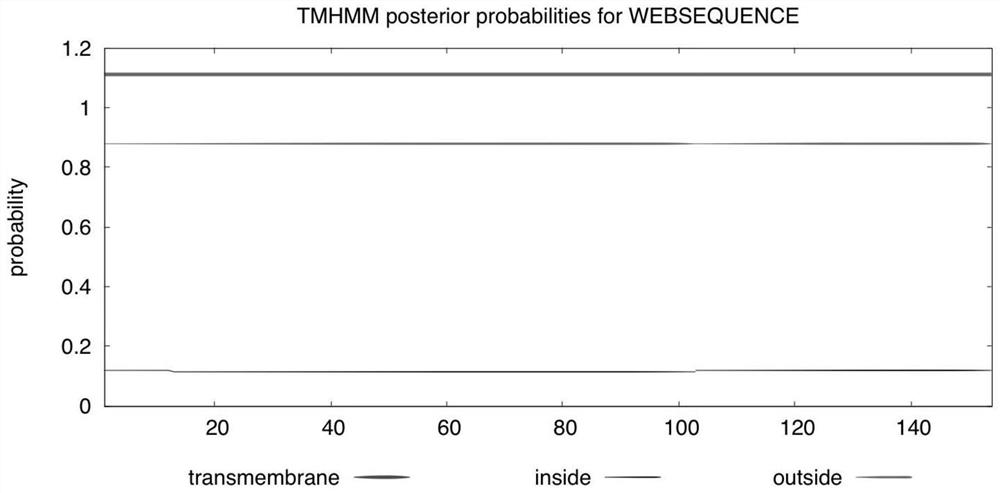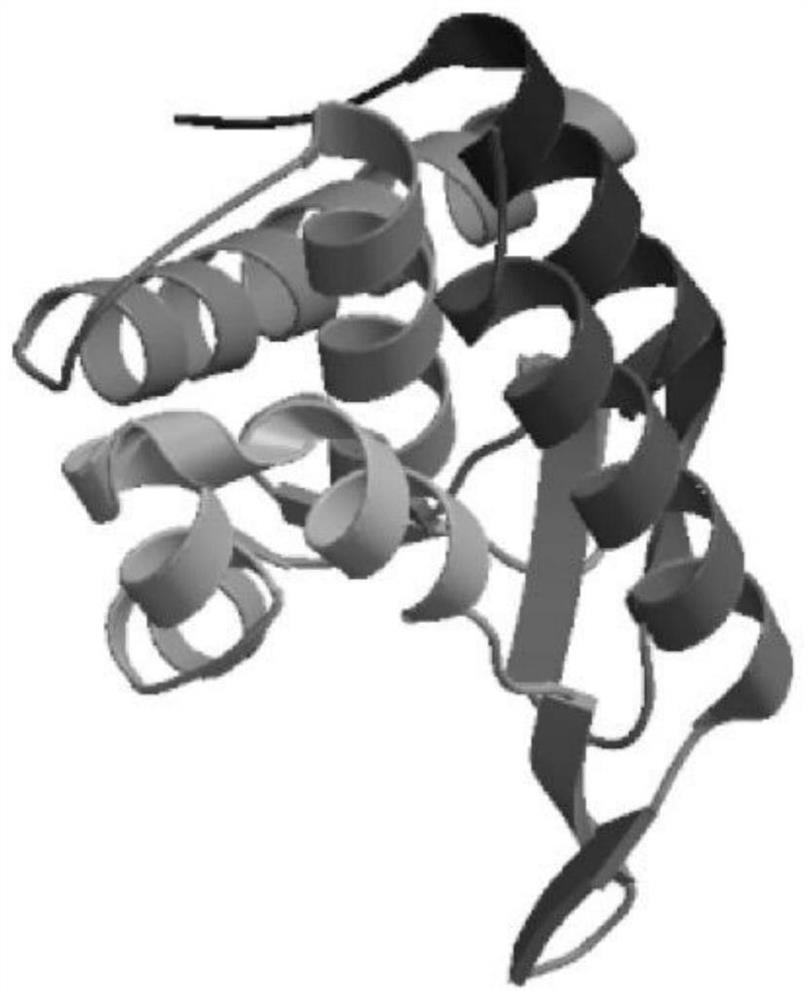Lyase of endo salmonella bacteriophage as well as coding gene, preparation method and application of lyase
A bacteriophage lyase, Salmonella technology, applied in the field of lyase of endometrial Salmonella phage, can solve the problems of environmental residues, drug-resistant bacteria and the like
- Summary
- Abstract
- Description
- Claims
- Application Information
AI Technical Summary
Problems solved by technology
Method used
Image
Examples
Embodiment 1
[0033] Example 1 Bioinformatics analysis of lyase L17.
[0034]In the previous work of the present invention, a strain of Salmonella cleavage phage PSM6 has been isolated and identified, and sequenced. (Huang Jingxiao, Shang Junkang, Chen Huimin, et al. Biological characteristics and genome analysis of a virulent Salmonella phage [J]. Biotechnology Bulletin, 37(6):11.). Bioinformatics analysis was performed on one of the lyases, L17. Use EMBOSSTranseq (https: / / www.ebi.ac.uk / Tools / st / emboss_transeq / ) to translate the nucleotide sequence of L17 into protein; use Interpro and Pfam tools to predict and analyze the conserved domain of L17 protein sequence, and use SignalP Tools to analyze signal peptide; TMHMM to analyze transmembrane structure; use psipred and swiss-model to analyze secondary and tertiary structure; use expasy's protparam tool to calculate the isoelectric point and molecular mass of the enzyme to be expressed, Nanjing Detai Biological Mirror Website Analyze rest...
Embodiment 2
[0035] Example 2 Expression and purification of lyase L17.
[0036] L17 gene amplification and construction of recombinant plasmid: According to the L17 gene sequence, use PrimerPremier to design specific primers. The L17 gene was amplified by PCR using the genomic nucleic acid of phage PSM6 as a template. The amplified product and the pCOLDⅡ plasmid were digested with the same restriction endonuclease, and then enzyme-linked. The enzyme-linked product was transformed into competent cells of Escherichia coli TOP10 strain. Recombinants were screened with ampicillin and verified by sequencing. Finally, the recombinant expression plasmid vector pCOLDⅡ-L17 was constructed.
[0037] Transform the pCOLDⅡ-L17 vector into Escherichia coli BL21(DE)3Plyss competent cells: Take 1 μL of the extracted vector pCOLDⅡ-L17 and add it to 100 μL of cloud-like competent bacteria, ice bath for 20 minutes; heat shock at 42°C for 90 seconds, and re- Keep transposed on ice for 5 minutes, add 600 ...
Embodiment 3
[0040] Example 3 The CCK8 method was used to measure the cytotoxic activity of L17.
[0041] Recovery culture of RAW 264.7 cells: Use tweezers to take out the RAW 264.7 cell cryopreservation tube on ice, boil water in the induction cooker and preheat it to 37-40°C, put the cells in warm water and shake gently until the ice cubes in the cryopreservation tube melt. Cells were moved to a biosafety cabinet in a cell room. Take 10mL DMEM medium (containing 10% FBS and 1% penicillin-streptomycin) in a 15mL centrifuge tube, centrifuge at 800rpm for 4min, discard the supernatant, continue to gently pipette the cells in the medium to suspend, and repeat the centrifugation. Add 2 mL of culture medium and gently pipette the cells to suspend them, then move them to a petri dish, continue to add 4 mL of culture media to the petri dish, move to an incubator containing 5% CO2, and culture at 37°C.
[0042] The cytotoxic activity of L17 was measured by CCK8 method; 100 μL of revived Raw 264 ...
PUM
 Login to View More
Login to View More Abstract
Description
Claims
Application Information
 Login to View More
Login to View More - R&D Engineer
- R&D Manager
- IP Professional
- Industry Leading Data Capabilities
- Powerful AI technology
- Patent DNA Extraction
Browse by: Latest US Patents, China's latest patents, Technical Efficacy Thesaurus, Application Domain, Technology Topic, Popular Technical Reports.
© 2024 PatSnap. All rights reserved.Legal|Privacy policy|Modern Slavery Act Transparency Statement|Sitemap|About US| Contact US: help@patsnap.com










